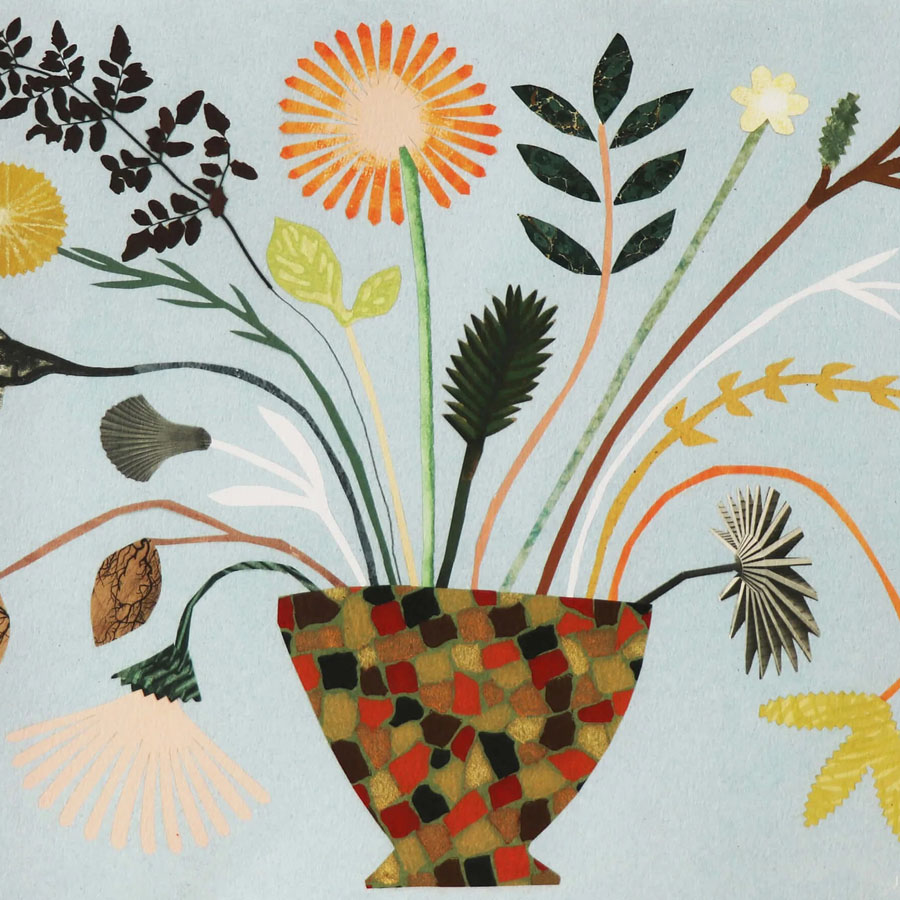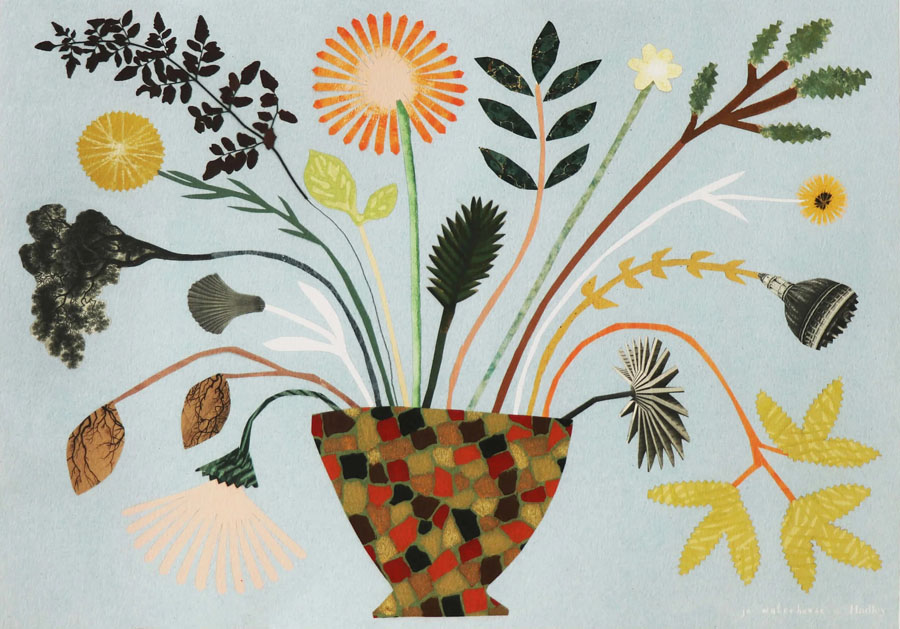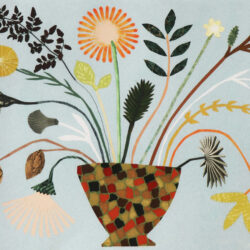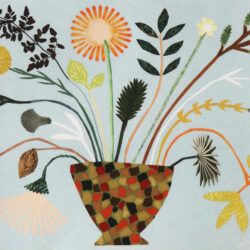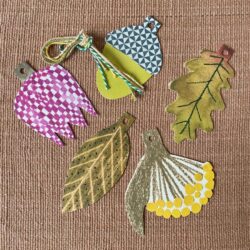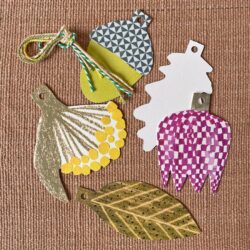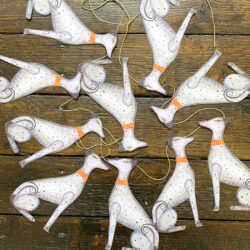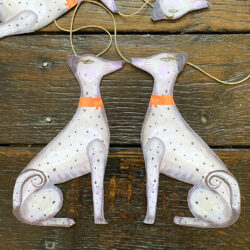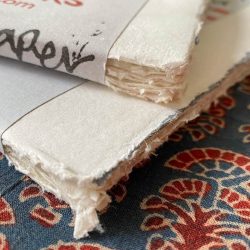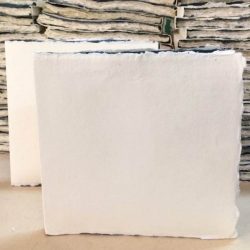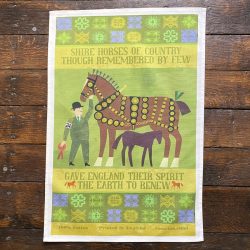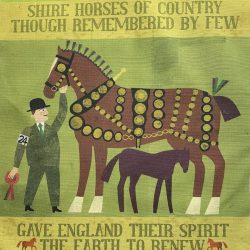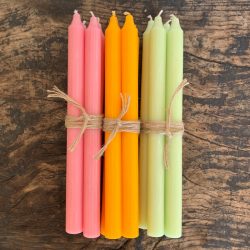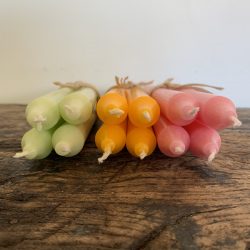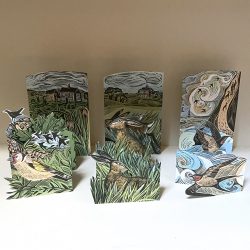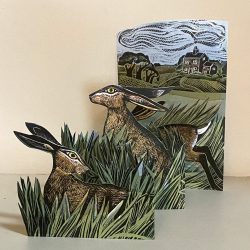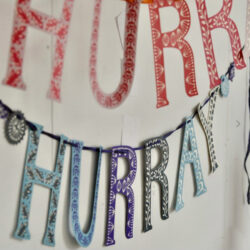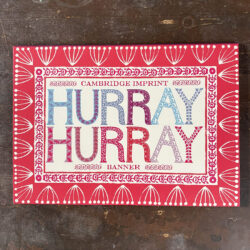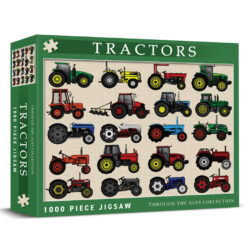Blue Bouquet Print by Jo Waterhouse
£25.00
A fine art print of a beautiful collaged bouquet in a folk art style on a pale blue background. Created by Jo Waterhouse for Hadley Paper Goods, the bouquet is built up from many found elements – dried plants, architectural illustrations, antique patterned tissue and 1950s wallpaper.
Digitally printed on high quality paper for added vibrancy and longevity, the paper stock is FSC approved and inks are vegetable based, your print will arrive in plastic free and recycled packaging to ensure low environmental impact.
Only 2 left in stock
What is a Limited Edition Artist Print?
An Artist or Original Print is hand-made and not a reproduction: the artwork is both created and printed by manual printmaking techniques eg. Wood engraving, etching, woodcut, linocut etc and as such is subject to minor or even quite significant and intentional variation. Limited Edition means that the print is restricted by convention to editions of no more than 200., because of the limitations of the block itself (wear and tear) and the time needed for each print. These prints are individually signed and numbered by the artist, who may also print a further 10% of the edition for their own use; these are designated "artist's proofs", labelled AP. An artist's proof is not a trial proof. A photo-mechanical or digital print is not an artist's print. No matter how the artwork is created it lacks the individual treatment given by the artist. Such a print may be described as limited edition and may even be restricted in number, but such reproductions often have a print run of 1000 or more, despite a relatively high price. They are much less likely to increase in value, even though sometimes being signed by the artists.Care of your Artist Print
All artists' prints or original prints are printed on acid-free paper to minimise discolouration, and are mounted and framed with conservation-quality materials. If unframed prints are to be remounted or framed, care should be taken to use conservation techniques and materials. Hand-made or mould-made papers are extremely sensitive to moisture, and need to be allowed some measure of contraction and expansion, but extreme conditions should be avoided; prints should not be hung in direct sunlight or in damp conditions, and on not account should the print itself come into contact with the glass in the frame. Non-editioned posters are pieces that have been produced by the artist but are not part of a limited edition and are not signed. All items within our Artists Posters category are non-editioned.Printing Techniques
Tinsmiths stocks and shows work by print artists using any or a combination of the following print techniques.Etching
The surface of a metal plate is covered in wax and the artist then creates their image by scratching into the wax. The plate is then immersed in an acid bath. The areas of the plate not covered by the wax are then ‘eaten’ away by the acid creating a grove for the ink to sit in. The plate is then covered with ink most of which is then rubbed off so only in ink in the groves remains. Dampened paper is then placed on an etching press and the plate placed ink side down on top of it. All this is covered with layers of padding and run through the press which looks a bit like a mangle. The image has now been transferred to the paper.
Linocut/Vinylcut and Woodcuts
All are relief printing processes in which the image is dug into the wood or vinyl - with the areas not to be printed being cut away. The linoleum or vinyl sheets are usually mounted on a wooden block and the woodcuts often display the grain of the wood (unlike a wood engraving where fine end grain wood is used such as boxwood)in the resulting prints. Successive prints may introduce more colours and the block may be modified between these to create polychrome image. Occasionally the vinyls and linoleums may be treated to give a variety of surface effects.
Lithography
A planographic form of printing. It differs from other processes where the image is raised (Lino/Woodblock), or recessed (intaglio: copper/wood engraving or etching). Lithography depends on the interaction of two incompatible substances, grease and water, on a prepared flat surface. The means of making marks on the stone/plates are very similar to those used for drawing/painting and consequently artists immediately feel comfortable using them, unlike having to come to terms with handling an etching needle on copper plate for example. Once the artist has completed the drawing, the prints are created on presses where an alternate use of damping and inking ensures that only the artist's drawn image receives the application of ink which, when printed on suitable paper, provides the lithographic print which employ several colours.
Collagraph
Collagraphs are images printed from collage plates, constructed from found materials, textures and also cut marks. The plates are printed in the same way as an etching.
Screen Print
Ink squeezed through a fine silk screen produces areas of textured colour. Areas are blocked out with stencils or by a photosensitive film. Artist's often adapt screen and make repeated and layered prints. Screen printing has its roots in commercial images and the resulting prints frequently have a bold and contemporary feel.
Giclee
This is an inkjet printer print & is not generally defined as an 'Artist Print'.
